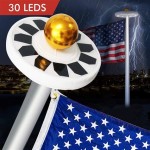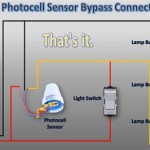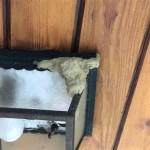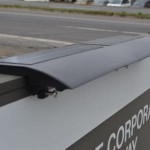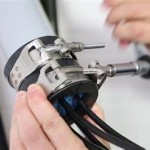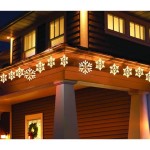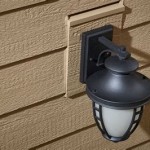What Is The Best Outdoor Antenna For HDTV Reception?
Choosing the right outdoor antenna for HDTV reception can significantly improve your television viewing experience, providing a range of channels without the need for cable or satellite subscriptions. The best antenna for you will depend on several factors, including your location, distance from broadcast towers, terrain, and desired channel selection. This article will explore the different types of outdoor antennas available, key considerations for selection, and tips for optimizing your setup.
Types of Outdoor Antennas
Outdoor antennas come in various shapes, sizes, and designs, each with its strengths and weaknesses. Here are some common types:
- Yagi Antennas: These are highly directional antennas that excel at picking up signals from a specific direction. They offer excellent gain and long-range reception, making them suitable for areas with limited signal strength or far from broadcast towers. They are often mounted on a rotator to adjust their direction for optimal reception.
- Log Periodic Antennas (LPAs): LPAs are multi-directional antennas that offer wider signal coverage than Yagi antennas. They are designed to receive signals across a broader frequency range, making them suitable for areas with multiple towers or inconsistent signal strength.
- UHF Antennas: These antennas are specifically designed to receive Ultra High Frequency (UHF) signals, typically used for digital television broadcasts. They are smaller and more compact than other types and are often used in areas with strong UHF signals.
- Combination Antennas: These antennas combine elements for both VHF and UHF reception, offering a wider coverage range for both types of signals. They are a versatile option for areas with diverse broadcast frequencies.
Key Considerations for Outdoor Antenna Selection
When choosing an outdoor antenna, several factors come into play to ensure optimal performance:
- Location: Determine the distance from your location to the nearest television broadcast towers. Factors such as terrain and surrounding structures can also affect signal strength. Utilize online resources like AntennaWeb to map your location and potential signal sources.
- Signal Strength: Strong signals require less powerful antennas, while weak signals require antennas with higher gain and directional capability. Consider factors like urban versus rural areas and the presence of obstructions like trees or buildings.
- Channel Selection: The frequency range of the channels you want to receive will influence the type of antenna required. VHF signals are typically used for lower-numbered channels, while UHF signals are used for higher-numbered channels.
- Antenna Size and Design: Larger antennas generally have better gain but may be less aesthetically pleasing or require more space for mounting. Consider your available space and desired aesthetics in the design decision.
- Installation: Consider the ease of installation and the necessary tools before purchasing an antenna. Some antennas require specialized mounting systems or professional installation.
Optimizing Antenna Performance
After installing your outdoor antenna, take steps to optimize its performance:
- Placement: Mount the antenna in a high, open location with minimal obstructions. Avoid areas with dense foliage or close proximity to large metallic objects.
- Direction: Experiment with different angles to find the optimal direction for maximum signal strength. Use a TV signal meter or a cell phone app to identify the strongest signal.
- Amplifier: If you encounter weak signals, consider using an antenna amplifier to boost the signal strength. Amplifiers can improve reception in challenging environments but may also introduce interference.
- Cable Quality: Utilize high-quality coaxial cable for optimal signal transmission. Avoid using long cable runs or cables with excessive bends or kinks, as these can degrade signal quality.
- Weatherproofing: Ensure your antenna is weatherproofed to withstand harsh weather conditions. Look for antennas with weather-resistant materials and protective coatings.
Choosing the right outdoor antenna for HDTV reception involves careful consideration of your specific needs and location. By understanding the different types of antennas, key considerations, and optimization strategies, you can significantly improve your digital television viewing experience and enjoy a wider range of channels without the limitations of cable or satellite services.

Outdoor Digital Tv Antenna For Hdtv And Uhf Reception Whole Factory Best Quality Yagi Made In China Com

The Best Tv Antennas For Rural Areas To Get Live Television Popular Science

Outdoor Digital Tv Antenna For Hdtv And Uhf Reception Whole Factory Best Quality Yagi Made In China Com

Top 10 Best Antenna For Rural Areas In 2024 Expert Reviews Our Choices

Reviews For Philips Universal Outdoor Hdtv Antenna Amplifier With Built In Signal Strength Meter Vhf Uhf 1080p 4k Digital Booster Pg 1 The Home Depot

Ditch Cable Keep Quality The Best Tv Antennas For Crystal Clear Reception 2024

Lyamzn 200 Mile Long Range Reception Amplified Uhf 4k 1080p Digital Outdoor Hd Tv Antenna With Mounting Pole Installation Kit Ph01227b020 The Home Depot

Hdtv Antenna Guide

Outdoor Digital Tv Antenna For Hdtv And Uhf Reception Whole Factory Best Quality Yagi Made In China Com

Antennas Direct Tv Reinvented
Related Posts

